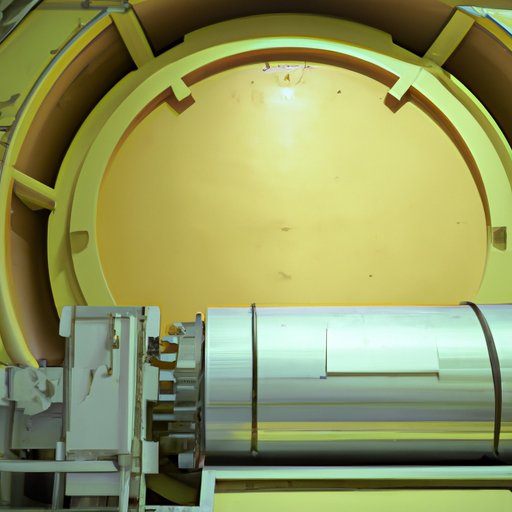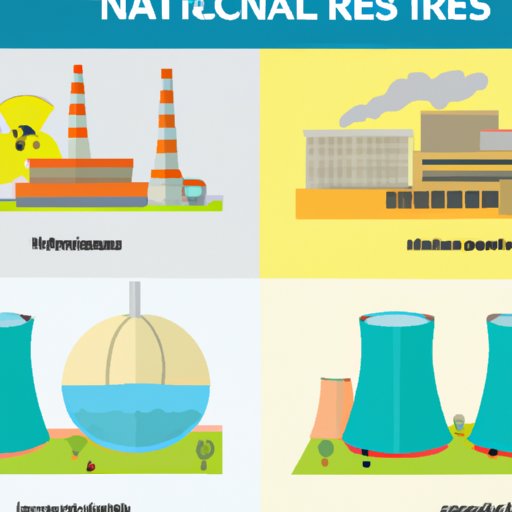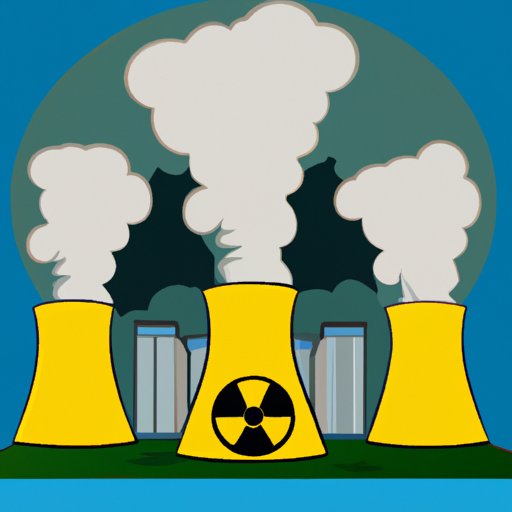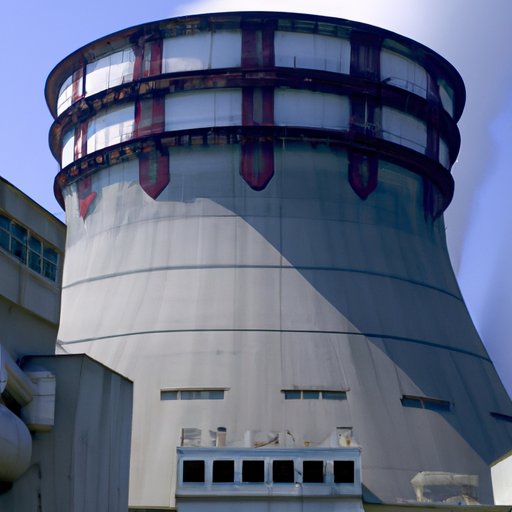Introduction
Nuclear reactors are devices used to generate electricity through the process of nuclear fission. In this process, atoms of certain heavy elements such as uranium or plutonium are split into smaller atoms, releasing large amounts of energy in the form of heat. This heat is used to boil water, which generates steam that powers turbines to produce electricity.
The purpose of this article is to provide an overview of how nuclear reactors work, including their components, safety features, and advantages. It will also compare nuclear reactors to other power sources.

Components of a Nuclear Reactor
In order for a nuclear reactor to function properly, it must have several key components. These include:
Nuclear Core
The nuclear core is the heart of the reactor. It contains the fuel – typically uranium or plutonium – that undergoes the fission reaction. The core also houses the control rods, which are used to regulate the rate at which the nuclear reaction occurs.
Control Rods
Control rods are inserted into the nuclear core and can be raised or lowered to adjust the rate of the nuclear reaction. They are made of materials such as boron or cadmium, which absorb neutrons and slow down the reaction.
Coolant System
The coolant system is responsible for keeping the reactor from overheating by circulating a coolant – typically water – around the core. This coolant absorbs the heat generated by the fission reaction and transfers it to a secondary loop where it is used to generate steam.
Containment Structure
The containment structure is a thick, reinforced concrete shell that surrounds the reactor and prevents radiation from escaping. It also serves to contain any radioactive material that may be released in the event of an accident.

Different Types of Nuclear Reactors
There are several different types of nuclear reactors, each with its own unique design and purpose. The most common types are boiling water reactors (BWRs), pressurized water reactors (PWRs), gas-cooled reactors (GCRs), and fast breeder reactors (FBRs).
Boiling Water Reactors (BWRs)
BWRs are the most common type of nuclear reactor. In these reactors, the coolant is allowed to boil inside the reactor core, producing steam that is then used to power turbines and generate electricity.
Pressurized Water Reactors (PWRs)
PWRs are similar to BWRs, but they use a pressurized coolant system instead of allowing the coolant to boil. This allows them to operate at higher temperatures and produce more power than BWRs.
Gas-Cooled Reactors (GCRs)
GCRs use a coolant such as carbon dioxide or helium instead of water. This allows them to operate at much higher temperatures than PWRs or BWRs and makes them well suited for applications such as space exploration.
Fast Breeder Reactors (FBRs)
FBRs are designed to produce more fuel than they consume. They do this by using a nuclear reaction to “breed” new fuel from existing fuel, thus creating a self-sustaining reaction.

Generating Electricity with Nuclear Reactors
Once the nuclear reactor is up and running, it can be used to generate electricity. Here’s how it works:
Working Principle
The heat generated by the nuclear reaction is used to boil water in the reactor core. This produces steam, which is then passed through turbines that turn generators and produce electricity.
Power Output
Nuclear reactors are capable of producing large amounts of power – typically between 500 and 1,000 megawatts. This makes them one of the most efficient sources of electricity available.
Safety Features of Nuclear Reactors
In order to ensure the safe operation of nuclear reactors, they must be equipped with several safety features. These include:
Emergency Shutdown Systems
Nuclear reactors are equipped with emergency shutdown systems that can shut down the reactor in the event of an emergency. These systems are triggered automatically if certain conditions – such as high levels of radiation – are detected.
Containment Structures
As mentioned above, containment structures are used to prevent radiation from escaping the reactor in the event of an accident. These structures are designed to withstand the extreme temperatures and pressures that would be present in such an event.
Radioactive Waste Management
Radioactive waste generated by nuclear reactors must be managed and disposed of safely. This is usually done by burying it in deep underground repositories, where it can remain isolated from the environment for thousands of years.
Comparing Nuclear Reactors to Other Power Sources
Nuclear energy has both advantages and disadvantages when compared to other power sources. On the one hand, it is a reliable source of energy that does not produce greenhouse gases. On the other hand, it produces radioactive waste that must be managed and disposed of safely.
According to a study by the U.S. Department of Energy, nuclear energy is the most cost-effective source of electricity when all costs, including those associated with waste management, are taken into account. Additionally, nuclear plants require less land than other forms of energy production, such as solar and wind.
Conclusion
This article provided an overview of how nuclear reactors work, including their components, safety features, and advantages. It also compared nuclear reactors to other power sources.
Nuclear reactors are reliable and efficient sources of electricity, and they can produce large amounts of power with relatively little land use. However, they also produce radioactive waste that must be managed and disposed of safely.
Overall, nuclear energy is a viable option for generating electricity, and it is likely to remain an important part of the global energy mix for the foreseeable future.
(Note: Is this article not meeting your expectations? Do you have knowledge or insights to share? Unlock new opportunities and expand your reach by joining our authors team. Click Registration to join us and share your expertise with our readers.)
